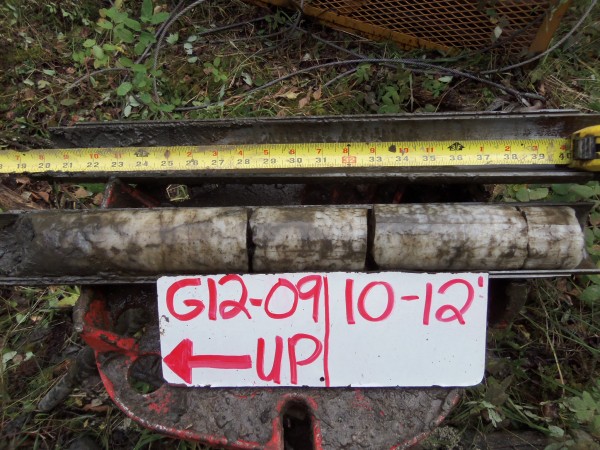Purpose and Procedure: A SPT or MPT can be used to assess the consistency of a soil interval and to collect representative soil samples and is the standard geotechnical sampling technique for coarse-grained soils. A S/MPT is performed by driving a 2.0-inch O.D. (1.5-inch I.D.) or 3.0-inch O.D. (2.4-inch I.D.) split-spoon sampler at least 18 inches past the bottom of the advancing drill stem with blows from a 140 or 340-lb drop-hammer, free-falling 30 inches onto an anvil attached to the top of the drill rod stem. The hammer blows are recorded and then corrected for various factors to estimate a standard (N1)60 value for each sample interval. (N1)60 values are a measure of the relative density (compactness) and consistency (stiffness) of cohesionless or cohesive soils, respectively.
Pros:
- Can collect a relatively undisturbed sample;
- Can provide resistance information be help evaluate the relative consistency of a given soil;
- Relatively common and inexpensive to collect;
- Re-usable equipment.
Cons:
- Can result in the collection of size-biased samples of coarse-grained soils;
- Cannot sample effectively competent bedrock or very coarse-grained soils;
- Difficult to sample permafrost soils;
- Can be difficult to obtain sufficient sample of coarse-grained soil to comply with ASTM test standards.


